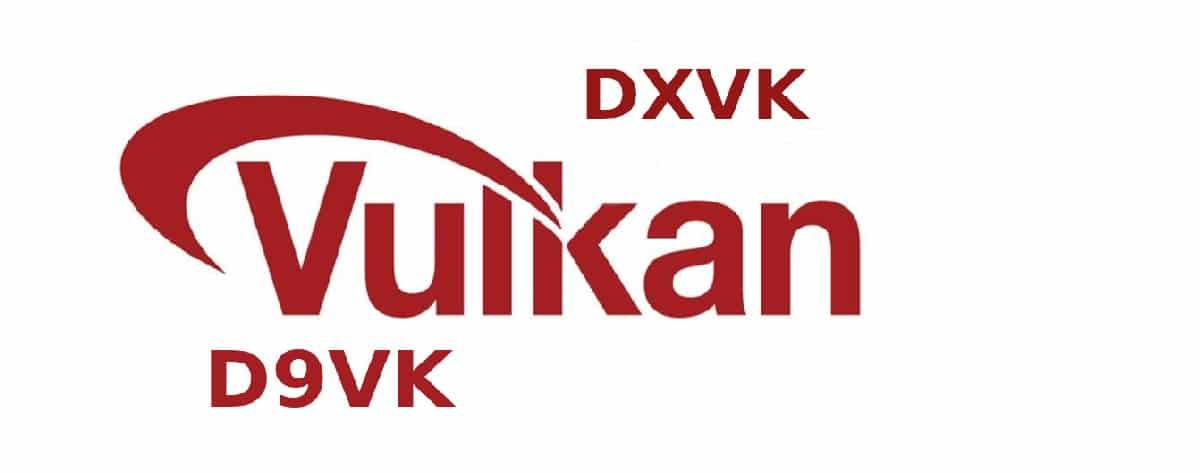
DXVK can be used to run 3D applications and games on Linux using Wine
The new version of DXVK 2.3 has already been released and comes with big changes and improvements for Vulkan, as well as bug fixes for some game titles, general troubleshooting, and more.
For those who still do not know about DXVK, they should know what it is one of the tools included in the Steam Play function from Steam.
Main new features of DXVK 2.3
In this new version of DXVK 2.3, one of the most important changes of this release is the improvements made to Vulkan VK_KHR_present_wait extension in which frame latency events will now be flagged when an image is rendered, rather than when the rendering job completes. It is worth mentioning that the extension can only be functional as long as it is compatible on the system and vertical synchronization (VSync) is enabled. It is mentioned that this functionality allows you to reduce the response time in some games, improve the accuracy of DXGI statistics on the number of frames displayed and improve the efficiency of the dxgi.maxFrameLatency and d3d9.maxFrameLatency options.
Additionally, on systems that support the Vulkan VK_EXT_swapchain_maintenance1 extension (supported when using the Gamescope composite server with the ENABLE_GAMESCOPE_WSI=1 option), the change resolves some performance issues in games that set the render interval relative to individual frames.
Another change that stands out in this new version is the Vulkan VK_EXT_ Depth_bias_control extension support, which provides correct depth bias scale, which resolves issues with artifacts appearing when rendering shadows in games using D3D9.
In addition to this, it also highlights the new configuration option «dxgi.hideNvidiaGpu" for replace obsolete dxgi.nvapiHack configuration. The new configuration is unified with similar configurations for AMD and Intel GPUs, and differentiates itself by tying workarounds to specific applications in which they appear.
Of the other changes that stand out:
- The dxgi.tearFree and d3d9.tearFree configurations have been merged into the common dxvk.tearFree configuration.
- The ability to specify configuration parameters is provided through the DXVK_CONFIG environment variable.
- With the support of the Vulkan VK_EXT_line_rasterization extension in the system, the ability to use smooth or rectangular lines in applications is implemented.
- Sending commands for D3D9 now works the same as for D3D11, which will result in more sends but will generally reduce resource read latency. This can improve performance in games that frequently sync with the GPU.
- Fixed a minor issue with D3D9's feedback loop tracking.
- Fixed a minor issue with D3D11 streaming output
- Fixed a bug and performance issues with D3D11 tiled asset deployment.
- Fixed various issues with HDR metadata reporting.
- Fixed a crash when compiling D3D9 shaders generated by the vkd3d HLSL compiler.
Finally if you are interested in knowing more about it About this new release, you can check the details In the following link.
How to add DXVK support to Linux?
DXVK can be used to run 3D applications and games on Linux using Wine, acting as a higher-performance alternative to Wine's built-in Direct3D 11 implementation that runs on OpenGL.
DXVK requires the latest stable version of Wine to run. So, if you don't have this installed. Now we will only have to download the latest stable package of DXVK, this one we found In the following link.
wget https://github.com/doitsujin/dxvk/releases/download/v2.3/dxvk-2.3.tar.gz
After having made the download now we are going to unzip the package just obtained, this can be done with from your desktop environment or from the terminal itself by executing in the following command:
tar -xzvf dxvk-2.3.tar.gz
Then we access the folder with:
cd dxvk-2.3
And we execute the sh command to run the install script:
sudo sh setup-dxvk.sh install
setup-dxvk.sh install --without-dxgi
When installing DXVK in a prefix of Wine. The advantage is that Wine vkd3d can be used for D3D12 games and DXVK for D3D11 games.
Also, the new script allows the dll to be installed as symbolic links, making it easier to update the DXVK to get more Wine prefixes (you can do this via the –symlink command).
How will you see the folder DXVK contains two other dlls for 32 and 64 bits these we are going to place them according to the following routes.
Where "user" you replace it with the username you use in your Linux distribution.
For 64 bits we put them in:
~/.wine/drive_c/windows/system32/
O
/home/”usuario”/.wine/drive_c/windows/system32/
And for 32 bits in:
~/.wine/drive_c/windows/syswow64
O
/home/”usuario”/.wine/drive_c/windows/system32/